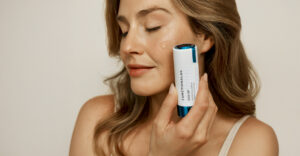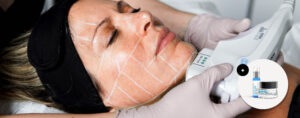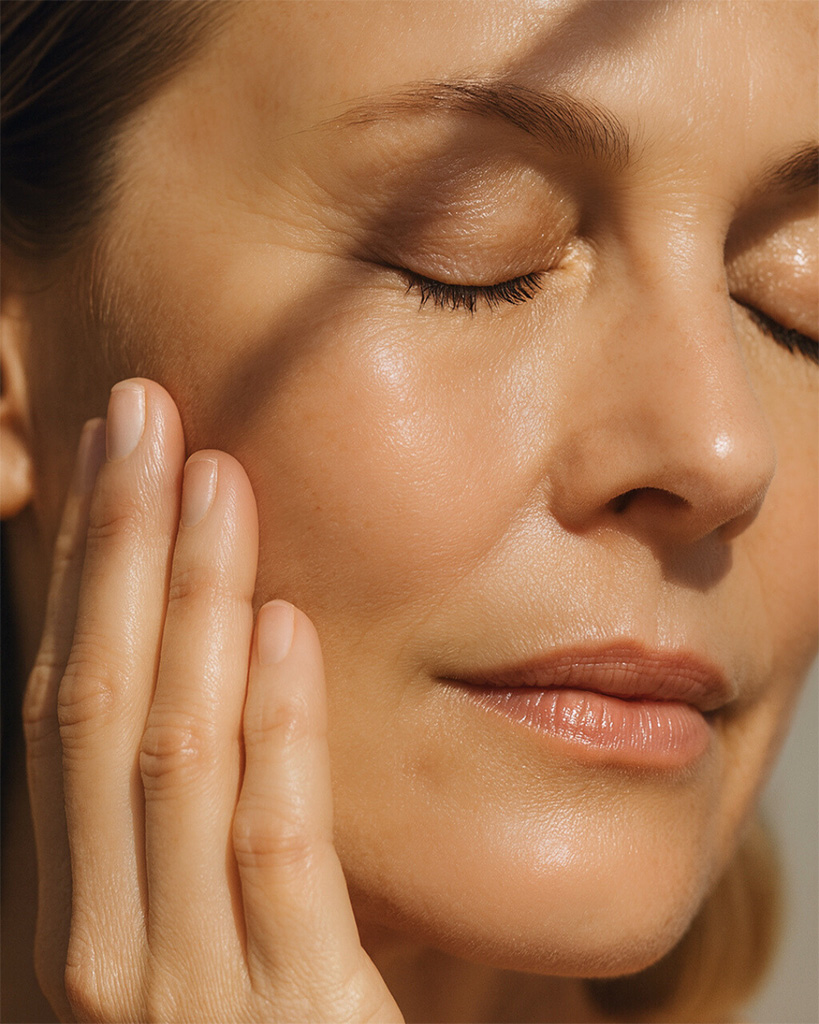When temperatures drop and the sun hides behind heavy clouds, sunscreen is often the first thing to disappear from skincare routines. After all, if you’re not feeling the heat, your skin must be safe—right? Wrong.
UV rays don’t take a break in the winter. Even on overcast, snowy days, your skin is still exposed to ultraviolet radiation that contributes to premature aging, hyperpigmentation, and even skin cancer. In fact, up to 80% of UVA and UVB rays can still reach your skin despite the cold, clouds, or snow-covered ground.
Most people underestimate winter sun exposure simply because the effects aren’t always immediate, but the damage is real and cumulative.
In this article, we’ll break down the science behind UV rays, explain why sunscreen is non-negotiable in winter, and show you how modern SPF products can actually enhance your cold-weather skincare routine.
Why Sunscreen Still Matters in Winter
It’s a common misconception that sunscreen is only needed when the sun is blazing and temperatures are high. But the reality is that UV radiation doesn’t vanish when it’s cold, it simply becomes more deceptive.
UVA vs. UVB: The Year-Round Threat
There are two primary types of ultraviolet rays that affect your skin:
- UVA rays are longer and can penetrate through clouds and glass. They reach the deeper layers of your skin and are primarily responsible for signs of premature aging like fine lines, wrinkles, and hyperpigmentation. These rays are constant throughout the year, regardless of the weather or season.
- UVB rays are shorter, more intense in the summer, and cause sunburn. While their strength decreases slightly in colder months, they can still damage the skin, especially when reflected off snow and ice.
So even when the skies are overcast or the thermometer dips below freezing, your skin remains vulnerable to these invisible aggressors.
Snow Reflection Amplifies UV Exposure
Here’s a surprising fact: Snow can reflect up to 80% of UV rays, effectively doubling your exposure. That means whether you’re walking your dog, going for a run, or hitting the ski slopes, your skin is still soaking in damaging rays from above and below.
4 Key Reasons to Wear Sunscreen in Winter
If you’ve ever skipped sunscreen in winter, you’re not alone. But once you understand how the season affects your skin, and how SPF can actually improve your winter skincare routine, it becomes clear that sunscreen is a year-round essential. Here are four science-backed reasons to keep applying it daily, even when it’s cold outside:
1. You Can’t Escape UV Rays
Even if it’s cloudy, snowing, or you’re indoors near a window, UVA rays are still reaching your skin. These “long wave” rays account for 95% of the UV radiation that reaches Earth’s surface and are present with the same intensity all year. They’re also the ones that accelerate visible aging.
As for UVB rays, the ones that cause sunburn? They may be weaker in winter, but they’re far from harmless. Snow and ice reflect UVB rays easily, leading to unexpected burns, especially on your nose, cheeks, and lips. Ever had a goggle tan after skiing? That’s UVB at work.
2. Modern Sunscreens Do More Than Just Protect
Forget the sticky, heavy SPFs of the past. Today’s sunscreens are sophisticated skincare hybrids. Many options are packed with added benefits like antioxidants, hydration, and soothing agents.
For example, mineral sunscreens enriched with Vitamin C, niacinamide, or bisabolol can calm redness, support collagen, and provide anti-aging protection, all while shielding you from the sun.
Some formulations even combine SPF with tint or moisturizer, simplifying your routine without compromising on results. It’s protection and skin enhancement in one step.
3. Winter Weather Can Wear Away Sunscreen Faster
In summer, we know to reapply SPF after sweating or swimming. But in winter, strong winds, snow, and friction from scarves or jackets can erode your sunscreen just as effectively, if not faster.
That’s why one morning application isn’t always enough. If you’re outdoors for extended periods, you should still reapply sunscreen every two hours, even in cold weather.
4. Winter Sports Mean Higher UV Risk
According to the Skin Cancer Foundation, UV exposure increases by 5% for every 1,000 feet you rise above sea level.That makes high-altitude winter sports like skiing, snowboarding, and snowshoeing especially risky for sun damage.
Even though most of your body is covered with gear, areas like your face, neck, and lips remain exposed and vulnerable. Before hitting the slopes, make SPF part of your pre-ski ritual, and reapply throughout the day, especially to areas not shielded by goggles or helmets.
Pro Tip: Choose a Mineral Sunscreen for Year-Round Use
When it comes to choosing the right sunscreen for winter, not all formulas are created equal. Mineral sunscreens, also known as physical sunscreens, offer an ideal solution for year-round protection, especially during colder months when your skin may be drier or more sensitive.
Unlike chemical sunscreens that absorb UV rays, mineral sunscreens create a physical barrier on the skin, reflecting and scattering both UVA and UVB rays. They work instantly upon application and are often better tolerated by sensitive or post-procedure skin.
Why Mineral Sunscreen is Ideal for Winter
- Protects against visible signs of aging like dark spots, fine lines, and pigmentation
- Gentle on skin prone to irritation, redness, or rosacea
- Water-resistant and non-comedogenic, making it safe for all skin types
- Enriched with antioxidants like Vitamin E, bisabolol, and niacinamide for added anti-inflammatory and anti-aging support
- No white residue, thanks to new-generation transparent finishes
Whether you’re navigating your daily commute or spending the day outdoors, a broad-spectrum SPF 50 mineral sunscreen is a smart winter skincare ally.
Dermapure Tip:
Try the award-winning Functionalab 100% Mineral Sunscreen SPF 50, or its tinted version, for seamless coverage with added skin-perfecting benefits. These high-performance formulas not only protect your skin from UV damage, but also calm, hydrate, and visibly enhance your complexion—even in harsh winter conditions.
How to Use Sunscreen in Winter – The Right Way
Knowing why sunscreen matters in winter is only half the battle, how you apply it can make all the difference. Cold weather, wind, and shorter daylight hours don’t reduce your UV exposure as much as you might think, which is why proper application remains essential.
1. Apply Every Morning—No Exceptions
Make SPF the last step in your morning skincare routine, after your moisturizer and before makeup. Even on cloudy, snowy, or overcast days, UV rays can still reach your skin, especially through windows or reflected by snow. Apply it 15 minutes before going outdoors for optimal protection.
2. Don’t Miss These High-Risk Zones
Most people forget areas that are particularly vulnerable to UV damage. Don’t skip:
- Ears
- Lips (use an SPF lip balm)
- Neck and décolleté
- The backs of your hands
- Around the eyes (use SPF-safe formulas)
3. Reapply—Yes, Even in the Cold
Winter weather can break down sunscreen just like sweat and water do in summer. Snow, wind, and rubbing from scarves or masks can erode your protection. Reapply every 2 hours when outdoors, especially if you’re participating in winter sports or spending extended time outside.
4. Post-Treatment? SPF Is Non-Negotiable
If you’ve recently had aesthetic procedures like peels, microneedling, or laser treatments, your skin is even more sensitive to UV damage. Applying SPF daily, especially a gentle mineral formula, helps reduce the risk of pigmentation and supports proper healing.







